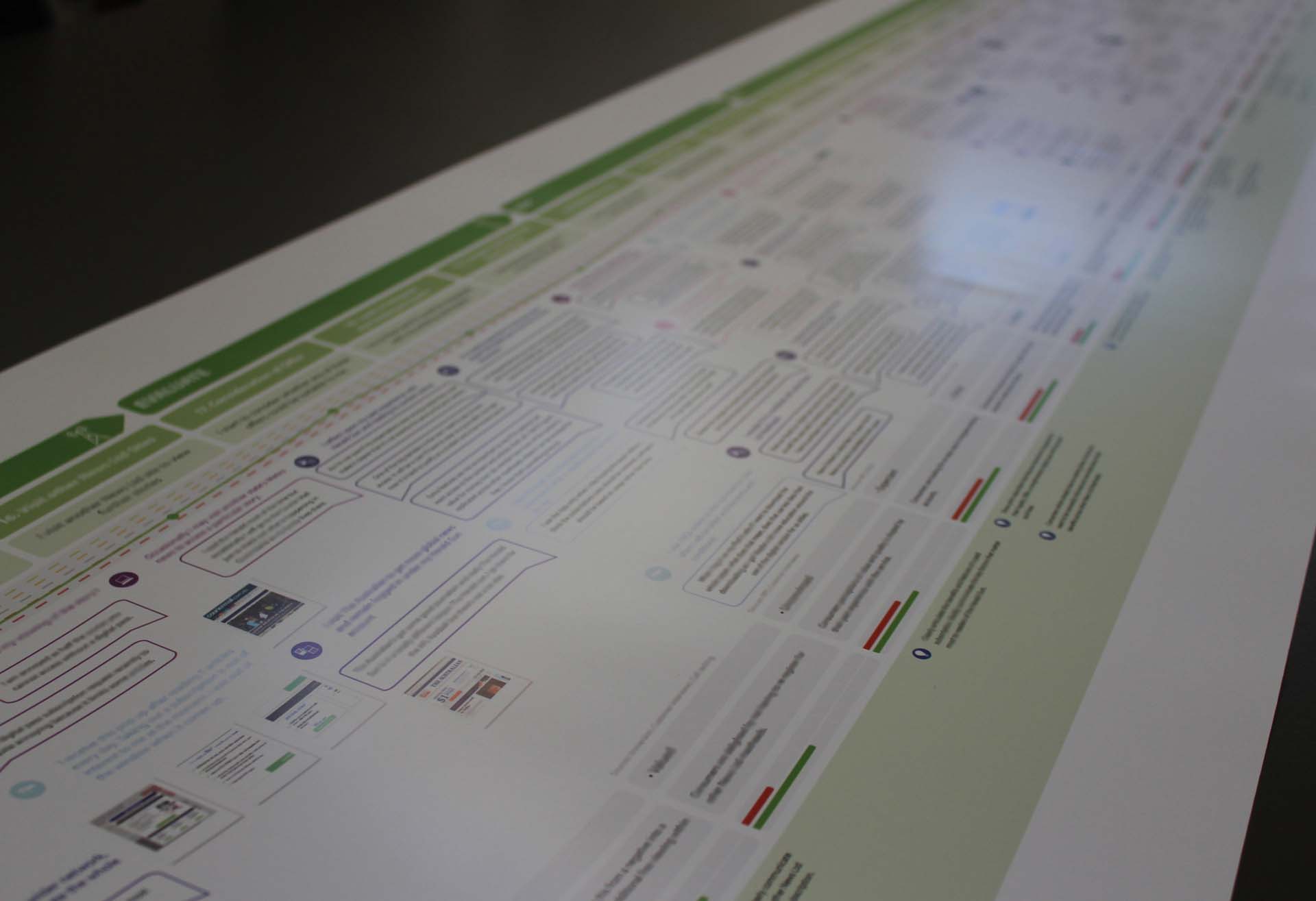It appears like customer journey mapping is on the verge of hitting the mainstream if appearing in HBR is anything to go by. Adam Richardson from Frog Design has written a follow up article to his first on defining customer experience. This second instalment looks at the first essential step of improving the experience you deliver, which is mapping out your customer journey. It's a high-level look at it, however, if you don't use this tool on a daily basis, it more than suffices for getting a relatively solid grounding. You can read the first five paragraphs here, or click here for the full article from HBR.
If you would like real-world experience in using Customer Journey Mapping for your company and your customers, check out our Service Design Masterclasses which start in February, click here for more information on workshops.
A customer journey map is a very simple idea: a diagram that illustrates the steps your customer(s) go through in engaging with your company, whether it be a product, an online experience, retail experience, or a service, or any combination. The more touchpoints you have, the more complicated — but necessary — such a map becomes. Sometimes customer journey maps are "cradle to grave," looking at the entire arc of engagement. Here, for example, is a customer journey timeline that includes first engaging with a customer (perhaps with advertising or in a store), buying the product or service, using it, sharing about the experience with others (in person or online), and then finishing the journey by upgrading, replacing, or choosing a competitor (re-starting the journey with another company): At other times, journey maps are used to look at very specific customer-company interactions. By way of example, let's look at a customer journey that doesn't work well: home theatre.
Anyone who has attempted to research, buy, set up, and use a home theatre system knows that this is one of the most frustratingly complicated customer experiences in the consumer electronics realm. It makes buying a car seem trivially easy. Here's a real sample of some questions asked by a prospective purchaser on a home theatre forum:
"For HD and Blue Ray DVD HDMI audio, I do not understand if any post-processing is done on the 5.1 Lossless PCM channels from these players. Will DD PLIIx or THX 7.1 apply to these? What are the limitations?"
Don't worry if you have no idea what this means — you shouldn't have to. There is no good reason why a layperson just wanting to watch movies at home should be exposed to such complexity and jargon. Yet in home theatre, such confusion is rampant. It's a bad sign when there are numerous forums for customers to help each other out, as is the case in home theatre since it means that the manufacturers have utterly failed in creating a comprehensive customer experience. But it's also an opportunity for smart companies: retailer Best Buy bought service start-up Geek Squad to solve exactly this type of problem.

